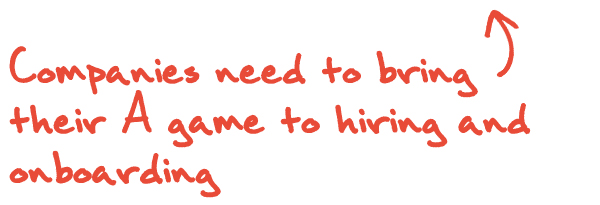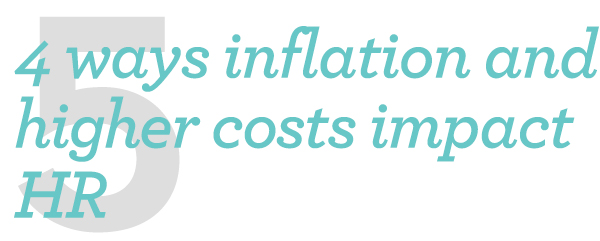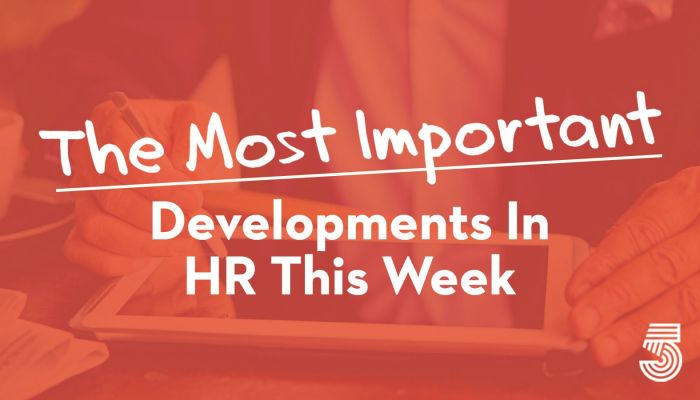The M.I.D., as we call it, is curated by our editorial team from more than 50 news sources. Like a lot of good ideas, this started as something I wanted for myself. If I can’t read everything, I at least want to stay abreast of the most important developments.
This week in HR, it was all about hiring and retention. 2022 grads want more money than you make, great onboarding and meaningful recognition will keep them around awhile, everyone feels meh about their jobs, and inflation may be coming for your HR budget.


Meet the class of 2022. They are the most in-demand college graduates to enter the job market in years. They have the expectations to match. Grads are seeking more money and flexibility and more specifics about likely assignments than previous classes. Some want their employers to take stands on social issues. And after wrapping the last two years of their education under pandemic conditions, they are highly adaptable yet hungry for face-to-face work, training, and mentorship. Companies that are struggling to fill open positions have good reason to respond. Many big employers — from technology giant Dell Technologies Inc. to professional-services firm KPMG — are either stepping up college recruiting or lowering entry-level job requirements to compete. Salary is a particularly high priority for new graduates. Raised in the aftermath of the 2008-09 financial crisis, they are part of a generation that experts say is risk-averse and craves financial security. The pandemic, and inflation, sharpened their focus on pay. WSJ


It is no news that hiring right now is incredibly difficult. Labor shortages are widespread, young workers are expecting higher starting wages, and after employers hire and train a new employee, the risk that they will jump ship for a better paying job is rising fast. How can employers do a better job hiring and keeping young workers? To attract and keep their core production people, many firms are raising wages, some are switching to full-time benefited positions, and some are even offering signing bonuses. These are essential, but what we learned is that what is more important to get young workers to stick around are the social aspects of hiring, especially those having to do with developing mutual respect and trust. What’s working: 1) Create career jobs, 2) Communicate opportunities for career progression, 3) Build positive relationships prior to hiring, 4) Ensure a positive first day reception, 5) Assign new hires a mentor, 6) Communicate and explain expectations clearly, 7) Create a culture where young workers can ask questions, 8) Understand their non-work lives, 9) Foster a climate of respect and dignity for everyone, and 10) Create a racially equitable workplace. HBR


I was talking to a colleague the other day, and she said that between the pandemic and a few life events over the past few years, she just isn’t as professionally ambitious any more. She has lots of things she would like to accomplish — they just aren’t related to work. The pandemic led all of us to face a significant number of significant challenges. Just about everyone has either gotten COVID or knows someone who has. Indeed, many of us know people who have died from the disease. On top of that, disruptions to the workplace have led people to rethink the importance of their jobs relative to other ways they might spend their time. Chances are that means that if you look back at your pre-pandemic self, and compare your values from that era to your values now, you may find that there has been a significant shift. That shift in values drives changes in where you want to put your effort. For some people, that has meant looking for alternative career paths. One force behind the Great Resignation is a desire on the part of a large number of people to realign their work with their values. For other people, it has meant seeking additional education in order to open up new paths. For many others, this shift in values has led to a de-emphasis of work relative to other life goals. Fast Company


Given that two-thirds of employees are likely to job-hunt in 2022, most organizations are thinking more deeply about how to engage and retain existing employees. Between the ongoing pandemic, a worsening labor shortage, and a workforce on the edge of burnout, there is a massive need to focus on retention and providing employees with support and recognition. Instead of handing in their resignations physically, many workers have begun silently resigning — known as “quitting in place.” Their LinkedIn profile may say they still work for your company, but they are checked out and disengaged from their day-to-day tasks and traditional employee contributions. Disengagement affects many aspects of business performance from employee retention to organizational performance to a company’s bottom line, raising a major red flag for HR departments. HR departments are scrambling to engage employees with unique perks like free gym memberships, four-day work weeks, and floating holidays. However, many are forgetting that employees are highly unique and frankly, generalized perks and rewards aren’t moving the “engagement” needle. Today, employees want to be recognized for their efforts, especially as many are taking on more responsibilities at work as the labor shortage continues. HR Executive


President Joe Biden recently laid out his plans to combat inflation and the high cost of living. While the Federal Reserve can do more to influence inflation than the President, his announcement is welcome because people are suffering and some economists believe a recession is looming. Under normal circumstances, the economy can cause burdens for HR leaders. In this case, businesses are still confronting uncertainty that comes from an ongoing pandemic, war in Europe, and a labor shortage. This is not to mention a mental health crisis and increased obligations for employers when it comes to employee engagement and experience. The first step in addressing the negative impact of the economy is being realistic about the current situation and understanding how it impacts HR: Some employees can’t afford return-to-office costs like commuting and lunches. Another obstacle for HR professionals is that increasing pay for new hires ended up creating an uneven divide between them and their veteran counterparts. Now, in some cases, loyal employees who stayed with their employers are earning less than new hires. They may be lured by the prospect of higher pay elsewhere, which could continue the cycle of the Great Resignation. HR Exchange Network










